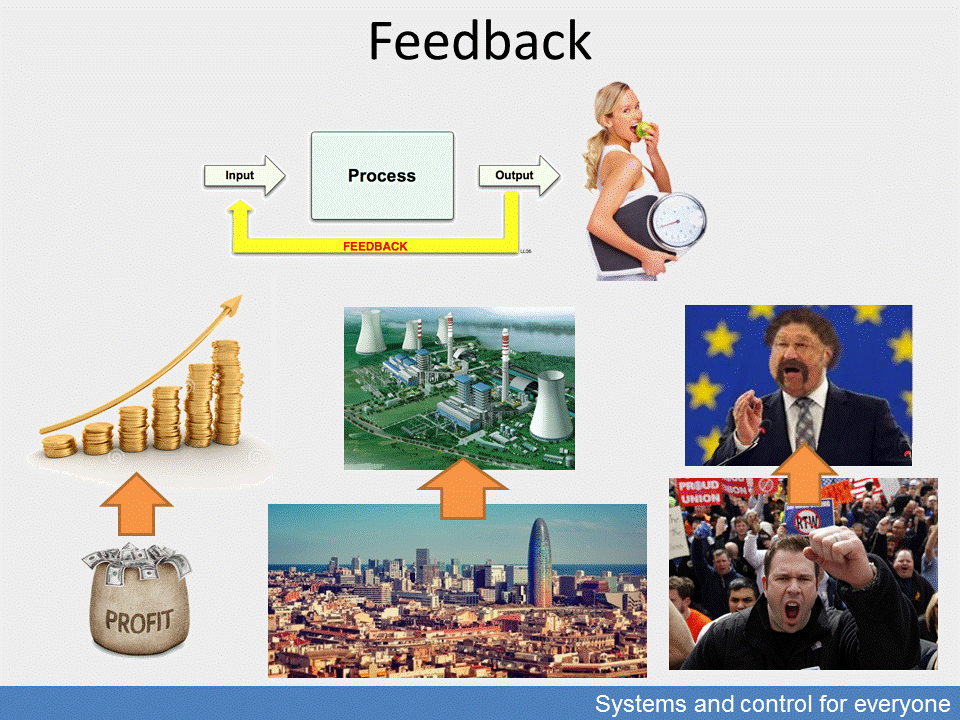

Feedback is a crucial element in closed-loop control
The signals which affect the desirable results work at the input of the processes. In order to ensure that the signals detected at the output meet our requirements, they have to be fed back to the input for control and correction.
This feedback is a central element in closed-loop control.
After a series of food intake we check our weight and then feed the result back to our diet; during the investment period we continuously monitor whether the chosen investment method has yielded the desired outcome; smart politicians feed back the effects of implemented measures to their policy; energy technicians monitor whether the produced energy is enough to meet demand economically without endangering production security.
These examples show that many kinds of variables and many types of needs have to be managed in a model, and the system must be created and then operated on the basis of the model in a way that feedbacks ensure the fulfilment of the original goals. This is why in the following we will deal with the general characteristics and the closed-loop control of system changes.